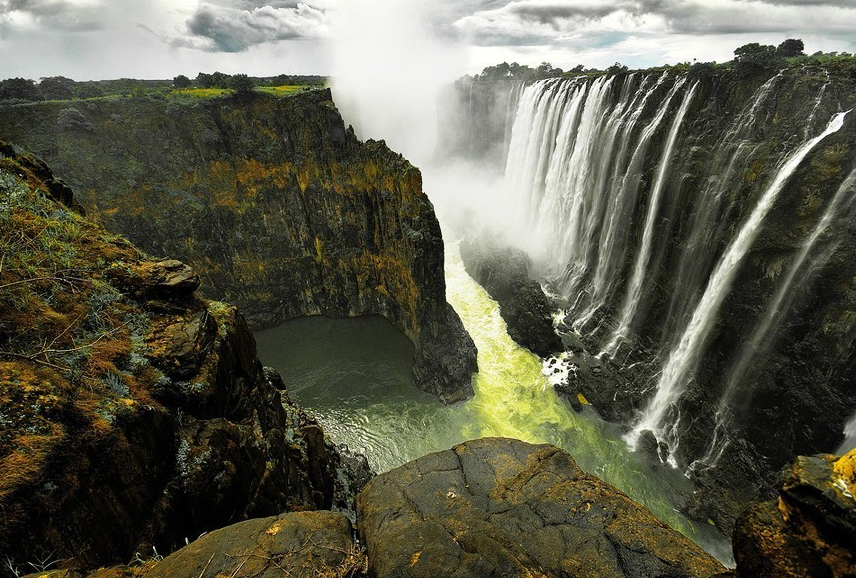
(Aburi Botanical Garderns)
It is the most beautiful, secluded and attractive place in Ghana. Opened to visitors in March 1890, the park covers an area of 64.8 hectares and overlooks the coastal plain of Accra from 370 to 460 metres above sea level.
Abri Botanical Garden is a must visit not only for every Ghanaian, but also for every tourist visiting Ghana.
(Cape Coast)
It was once the famous "slave fort" in the slave trade, and was the seat of government for the British colonists at that time.
(Mohr National Park)
Is a national park in the West African country of Ghana, located in the northwest of the country, covers an area of 4840 square kilometers, was established in 1958, an altitude of 150 meters, the annual average rainfall of more than 1000 mm, Wild animals include African elephant, hippo, buffalo, warthog, waterbuck, red antelope, horse antelope, bubalus, muntjac, East African baboon, green monkey, red monkey, Colobus monkey, dwarf crocodile, African crocodile, hyena, lion, leopard, etc.
(Great Zimbabwe site)
The Great Zimbabwe Site is listed by the United Nations as one of the World Cultural Heritage Sites and is the most important ancient site in sub-Saharan Africa. It represents the ancient African civilization, known as the "Zimbabwean culture".
The site is located about 300 kilometres south of Harare and covers a total area of 720 hectares. It's made of more than 900,000 pieces of granite. The stones are connected without any adhesive material, and are still strong and tall and magnificent.
(Sinoe cave)
West Noa Cave is located in the northwest of Harare, Zimbabwe, about 120 kilometers away, is a precious ancient human cave site. The Sinnoa Cave consists of a open cave, a dark cave, and a deep pool in between. Myeongdong has a hole in the ground about 4 meters in diameter, the hole is several meters long, and the slope of 45 degrees to the ground.
In addition to the hole, there are three "Windows", two of which are stone holes on the roof of the cave, and the sun can also be directly injected into the hole, so although the hole is deep, there is still light.
(Hwange National Park)
Hwange National Park is located in the southwest of Zimbabwe, established in 1928 Hwange National Park, an area of 14,000 square kilometers, nine Hong Kong size, is Zimbabwe's largest wildlife park, the park has maintained a pristine and well-managed style, a large number of wild animals live here.
In Zimbabwe, visitors can always enjoy a high standard of comfort and feel the warmth of the Zimbabwean people.
(Manapol National Park)
Manapol National Park, together with Sabi Nature Zoo and Chiore Nature Zoo, consists of three wildlife conservation areas, located in the northeast of Lake Kariba in Zimbabwe and the border with Zambia, established in 1963 and 1964, with an area of 2196 square kilometers, 3390 square kilometers and 1180 square kilometers, respectively.
(Kami site)
Inscribed on the World Heritage List in 1986 according to Cultural Heritage selection criteria C(III)(IV), the 35-acre site of the ancient city of Kami in Great Zimbabwe is the most notable of the 50 famous urban sites between the Zambezi and Limpopo rivers in southern Africa.
Kami, once the capital of Greater Zimbabwe and once a prosperous development, was abandoned in the mid-16th century. Today Kami is an important archaeological site in Zimbabwe.
(Mount Inyangani)
Mount Inyangani, Zimbabwe's highest peak at 2,592 meters, is located about 275 kilometers southeast of Harare and receives 2,200 millimeters of rainfall per year, which is very dry during the winter period from May to August.(Balance rock park)
The Balance Stone Park, located on the outskirts of the Zimbabwean capital Harare, is famous for its giant, strange stones.
(Mosiotunia Falls)
The old name "Victoria Falls" is located in the middle reaches of the Zambezi River in Africa, on the border between Zambia and Zimbabwe. More than 1,700 meters (5,500 feet) wide and 108 meters (355 feet) high, it is one of the world's most famous waterfall wonders.
European explorer David Livingston discovered it in 1855 and named it after the Queen of England. Victoria Falls was inscribed on the World Heritage List in 1989. Mosiotunia Falls is twice the width and height of Niagara Falls. The average flow rate is about 935 cubic meters per second (33,000 cubic feet per second).
The vast Zambezi River flows gently over a wide, shallow basalt bed before reaching the falls, then suddenly plunges some 50 meters (150 feet) down a steep cliff into a deep canyon. The main waterfall is divided into several strands by rocky islands in the river, and the spray rises up to 300 meters (1,000 feet) and can be seen from as far as 65 kilometers (40 miles) away.Every time the new moon rises, the water mist reflects the dazzling moonlight rainbow, the scenery is very charming. The waterfall sounds like thunder, and the local Kalolo-Lozi people call it Mosi-oa-tunya, which means "thunderous fog."
It is believed that as early as 90 AD, a small agricultural population settled on both sides of the Zambezi River. Most indigenous people live from fishing and hunting within a radius of 128 km (80 mi).

